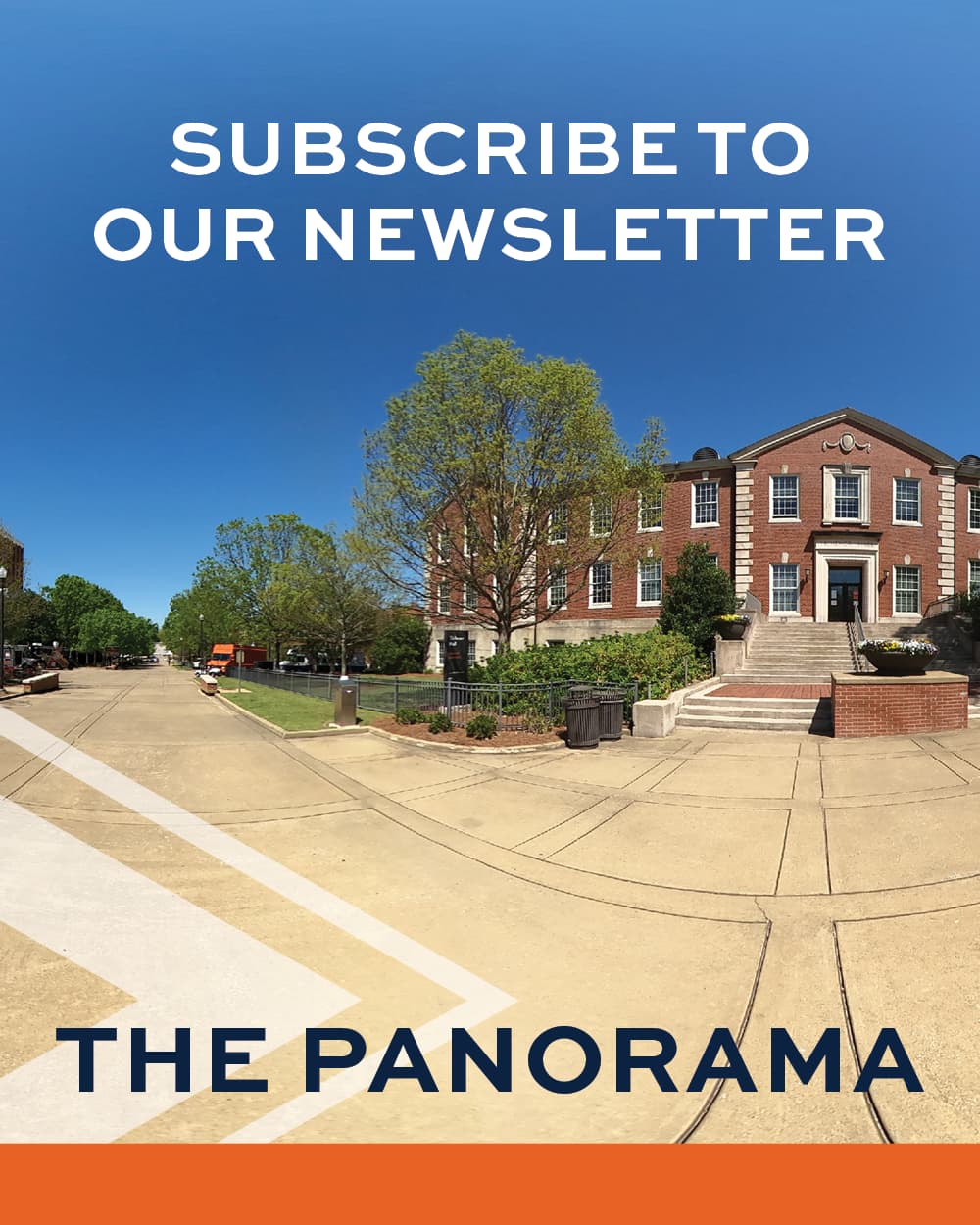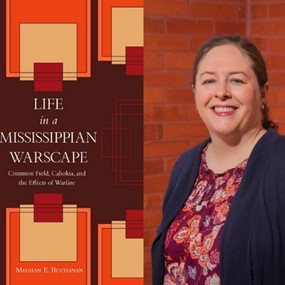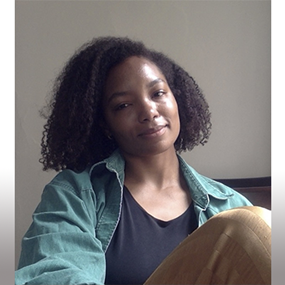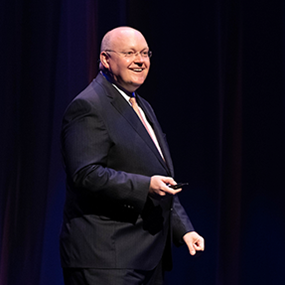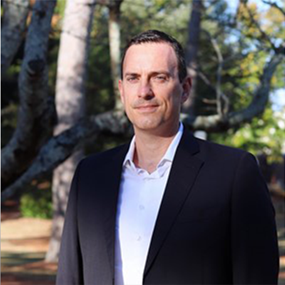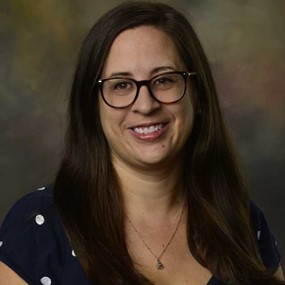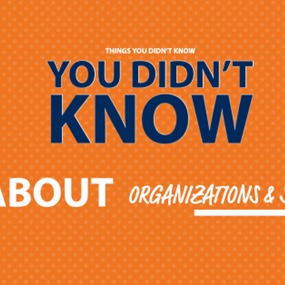'Things You Didn't Know You Didn't Know' about women in politics
In "Bringing Home the White House," Melissa Estes Blair introduces us to five fascinating yet largely unheralded women who were at the heart of campaigns to elect and reelect some of our most beloved presidents. By examining the roles of these political strategists in affecting the outcome of presidential elections, Blair sheds light on their historical importance and the relevance of their individual influence.
In the middle decades of the twentieth century, both major political parties had Women's Divisions. The leaders of these divisions–five women who held the job from 1932 until 1958–organized tens of thousands of women all over the country, turning them into the "saleswomen for the party" by providing them with talking points, fliers and other material they needed to strike up political conversations with their friends and neighbors. The leaders of the Women's Divisions also produced a huge portion of the media used by the campaigns–more than 90 percent of all print material in the 1930s–and were close advisors of the presidents of both parties. In spite of their importance, these women and their work have been left out of the narratives of mid-century America. In telling the story of these five West Wing women, Blair reveals the ways that women were central to American politics from the depths of the Great Depression to the height of the Cold War.
Order your copy of "Bringing Home the White House."
Transcript
Brandon Etheredge:
In the midst of some of the greatest upsets in presidential history, a group of unsung heroes worked behind the scenes to help bring electoral victories to candidates on both sides of the aisle. When Harry S. Truman won one of the biggest upsets in presidential history, it was a woman in the wings who helped bring home the White House. And when FDR was running to pass his new deal, two women were busy in the print shop, creating and distributing campaign materials nationwide and helping the campaign understand voter sentiment on the ground across the country. Six women were the secret weapon of some of the most influential presidents of the 20th century. They had their finger on the pulse of voters and helped influence campaigns. Join us on this episode of the Things You Didn't Know You Didn't Know Podcast as we unravel the hidden history of these extraordinary women.
Welcome back to another captivating episode of the Things You Didn't Know You Didn't Know Podcast. I'm your host, Brandon Etheredge, and today we have a special guest, Dr. Melissa Blair, professor and chair of the history department at Auburn University. Dr. Blair is also the brilliant author of the groundbreaking book Bringing Home the White House: The Hidden History of Women Who Shaped the Presidency in the 20th Century. Thanks for being here, Dr. Blair.
Melissa Blair:
I'm happy to be here.
Brandon Etheredge:
So let's start with the headline. Who are these mysterious women that we've never heard of?
Melissa Blair:
Sure. So there are five main women that I'm going to talk about, three of whom worked for FDR. Their names are Molly Dewson, Dorothy McAllister, and Gladys Tillett. Then there's a woman named India Edwards who worked for Harry Truman, and on the Republican side of the aisle, a woman named Bertha Adkins who worked with President Eisenhower. And they are all five of them at different points in time. The director of the Women's Division of either the Democratic or Republican National Committee, and what that means, the Women's Division was something that was set up. When Molly Dewson builds the Women's Division in 1932, it's the first time that it becomes like a permanent office. Women get the right to vote in 1920. In 1920s, presidential campaigns that were like directors of women's activities that would sort of pop up and then go away when the campaign was over.
But starting in the '30s, these become permanent fixtures of both parties, and they are designed to connect the party and the president with women. And that connection goes both ways. So if a president wants to know what women think about a particular policy, what are the issues that women are most concerned about, that sort of thing. These five women that I write about, the directors of the Women's Division, are the people he'll ask that question of, they're sort of his source, but they also are the women who then can take what's going on in Washington and get it out to women throughout the country. One of the things that Dewson does that's copied by all of the other women is she has a mailing list of tens of thousands of women nationwide who receive newsletters and flyers and talking points, and postcards that they are supposed to use to turn themselves into the saleswomen of the party. And that's what leaders in both parties call these grassroots women. They are the saleswomen of the party, and then they report to the five women I write about.
Brandon Etheredge:
So that's kind of where I want to go with this next question. Having a marketing background, I was so captivated by what these women were doing in the campaigns. I mean true case studies in solving problems for their constituencies, their audience crafting these effective solutions to mobilize the women of America to get them involved in politics. Can you share some of the strategies that they were using that made such an impact on the outcome of these elections?
Melissa Blair:
Yeah, sure. So one of the things you mentioned in the little intro, the women in the print shop, that in the 1930s is one of the most important innovations and one of the most important things they're doing. As the 32 campaign is gearing up, there's this great little story about Molly Dewson and Eleanor Roosevelt, and I should mention Molly was good personal friends with both Eleanor and Franklin Roosevelt. So there's this story that Molly and Eleanor are meeting with these guys from the DNC who have prepared this material to send out to undecided voters. It is 12 pages long, and they both-
Brandon Etheredge:
Which we all want to read, right?
Melissa Blair:
And they both are like, "Nobody's going to read this." And so, in the face of sort of incompetence at marketing by this group of guys, Dewson adapts a format that had been used successfully in the women's suffrage fight. And Dewson had been active in that fight earlier in her career, and she calls it when she's using it for FDR, for the Democratic Party in the 1930s. She calls them rainbow flyers. So they're single sheets of paper, broad size, broad sides. Each one is printed on a different color of paper, which is why they're called rainbow flyers. And each one is about a different topic. So one would be about tax policy, one would be about agriculture, one would maybe be about trade, and they're just short little factual things about here's what our candidate wants to do on this issue. Real quick, you can glance at it, you can read it, and these things are incredibly successful.
They print millions of these for the '32, '36, and 1940 campaigns in particular. They just print these in enormous numbers. In 1936, the rainbow flyers are 90% of the print media sent out by the Democratic National Committee. There's this great little exchange of letters between Molly Dewson and a guy named Charlie Mickelson who's the head of publicity for the DNC, where she's like, "No, if men want to use these, they have to pay the Women's Division for them." She's like, "No, we're not going to give them to you. You're going to pay for them. We're writing them. We're printing them. You guys want them, you're going to pay for them." Also, I won't give more than this many at a time, otherwise I'm worried that they're just going to sit in an office. They can order this many at a time, and that's it.
Please tell the guys that these are the rules and these things are so successful and so proper that Mickelson just kind of like, "Okay," and that's how it works. And so they're being sent, circulated nationwide. Some men are passing them out, but it's mostly women that are passing those tens of thousands of women that I mentioned that are on Molly Dewson's mailing list. We'll get these things in the mail, and they will hang them up in the windows of stores downtown. They'll take them to have them out when friends come over for coffee and be like, "Did you see this?" And they spread the word in that case in '36 of the accomplishments of the New Deal.
Brandon Etheredge:
It's so interesting how that goes back and forth. I think about candidate websites now, and it's just pages and pages of information, and a quick bullet-point list would be really nice.
Melissa Blair:
Yeah, yeah. No, I love... when I found that story. It's actually in Eleanor's most recent biography, by a guy named David Michaelis. It's where I got that anecdote, and I was like, "Oh, that's great." They're like, "This is too long."
Brandon Etheredge:
That's awesome. So I think it's important to think about the cultural backdrop of the times these women were doing this work in. You talk about in your book, all of this is happening in a time when women are really leading the charge on the home front. And one of the campaign tactics that I thought was really interesting was even called Housewives for Truman. Let's talk about how these women, and for that matter, the suffragists that came before them, really bucked the trend of what most women were doing during this period of history.
Melissa Blair:
I think it's important to emphasize that our image of women in this time period is accurate for most women, even as late as 1960, fewer than 40% of women are in the paid labor force outside of home, even as late as 1960 that even including during World War II. We never get higher than that. So most women are housewives. That's what most women are doing. But these women are breaking with that in a couple of different ways. Two of the women that I write about, Molly Dewson, the first one, and also Bertha Adkins, the one who works for Eisenhower, are actually both lesbians with long-term partners that people know about. They're not completely in the closet. That is particularly unusual for the one that works for Eisenhower. Dewson is in part of this, again, older generation of suffrage activists, where there was some great stuff that came out around the centennial of women's suffrage about just how many of the leaders of that movement were in same-sex relationships.
So she's a little bit more in keeping with that milieu that she's coming out of. But to me, because of that, the even more interesting one thing that I found was that two of these women that I write about, Dorothy McAllister and Gladys Tillett, have school-aged kids when they're doing this work. And that's really unusual. Dorothy, in particular, I find fascinating. I know the least about her of any of the women I write about. But what I found was, I found her in the 1940 census in Alexandria, Virginia, listed as head of household with her two daughters, Mary and Claire, who were aged 14 and 10, and it's just the three of them in the house. And that's because her husband, the girl's father, was a judge in Michigan, which is where they're from. And so when she becomes the director of the Women's Division in 1937, she moves to DC with her girls, and he stays home in Michigan.
And while she certainly would've employed some sort of domestic help or domestic worker to be there when the girls got home from school to sort of take care of some of that stuff, this is before there's anything like after school or daycare, or anything like that. So she would've had to pay somebody to be there when her girls got home from school. She's the one getting them out the door in the morning, and then after she gets them out the door, she crosses the Potomac and becomes a central part of doing something that has never been done before or since, which is elect a president for a third term, because that's what she's doing, and FDR's third term in 1940. And so it's just remarkable to me to think about her. I have a 13-year-old daughter. I know exactly. Getting kids that age out the door and then going and doing something so extraordinary. And it's one of the reasons why I'm so happy that I found these women and got to tell their story, because they're just remarkable.
Brandon Etheredge:
That's so interesting. Well, these women, while they do kind of buck the trend of what most people think about women at that time and what most women were experiencing that time, they harness the power of the more traditional women, the housewives. Can you talk a little bit about some of the ingenious tactics that they employed, such as Housewives for Truman, and how they were really able to mobilize women that were mostly serving on the home front?
Melissa Blair:
So Housewives for Truman, and this is really a story about the '48 campaign, which everybody knows is the story you mentioned in the intro, the big upset. This is the Dewey Defeats Truman, Harry Truman holding up the newspaper, the huge upset victory. One of the major domestic issues of that campaign was inflation, which-
Brandon Etheredge:
That's relatable.
Melissa Blair:
... resident for us today. So what happens is that, for the first time in many, many years, the Republicans get control of Congress in the 1946 midterm election. And so, in early '47, they end all of the price controls that had still been in place from World War II, and prices start going through the roof. And so India Edwards and the Women's Division publicize this in a couple of different ways. They use basically the same tactics that they get out to the public in a couple of different ways. One is this program that you mentioned called Housewives for Truman. So they pick about 10 swing states, and they work with women, local democratic women, again, who are on those mailing lists, and they kid out like an Airstream trailer with banners and posters that they just park in a central location in town, hang Harry Truman banners outside it, open it up.
And one of the things that they always had was a chalkboard outside that the women in that town would've gone shopping that morning, would've bought a bag of groceries, come back, written on the chalkboard how much they paid for all of that stuff that day and how much they would have paid under the price controls at the end of '46. So they're sort of dramatizing just how much prices have gone up in the 18 months or so since price controls ended. And they're really that notion of politicizing women as shoppers. It's super important to the middle of the 20th century, just in general. We think about it even during the war, things like rationing. This is how you're a good citizen, how you participate in the war is by not buying stuff.
The idea of consumer culture is central to the Cold War. Part of the argument about why the American way of life is better than the Soviet way of life in the context of the Cold War is all of our creature comforts, all of our stuff. And even if you think about something like the civil rights era boycotts, there's this whole history of politicizing shopping in this period that they're really tapping into. But the thing that I found most interesting, so that works, the trailers are great if you happen to be in one of the towns where they come through. To me, one of the most brilliant things that Edwards does, India Edwards comes up with a way to get that same basic information out nationwide. She designs this series of radio programs. There's two a week for the last month of the campaign, so for the month of October, and in September, she writes to women leaders on the Women's Division mailing list in about 15 cities across the country with a calendar, and I'm making up the dates and the items in the cities here, but this is how it basically worked.
So say on October 3rd, she wants women in Cleveland, Kansas City, and San Francisco to go buy green beans, pork chops, and butter, and then send a telegram. This is my favorite part about it, because even the males on trains take a while, and long-distance phone calls are expensive. So then they send a telegram to the Women's Division office in Washington with how much they paid for those items that day. That information then goes into the speech of the radio program that is recorded the next day. And so it's this fascinating thing of how they're getting real-time information about this issue that's so central to the campaign, this issue of inflation, and then using the radio to get that out nationally.
Brandon Etheredge:
That is so interesting, and it's really kind of astonishing that these women, who had such a significant impact on the nation's history really through what they're doing in these campaigns and the direction of the country, and they've remained relatively unknown and uncelebrated until now. Why do you think that their stories have been largely overlooked?
Melissa Blair:
Yeah, it's a great question because I did not know any of these women except Molly Dewson existed until I found them in the archives. I did not know about them and go looking for them. I got into the archives at the various presidential libraries and I found these women, which I think is indicative of just how forgotten they've been. Right? I'm a scholar of 20th-century women in politics. If I've never heard of these women, nobody's ever heard of these women, and I think they've been forgotten for a few reasons. I think one is that the sort of mythology around, especially if we're talking post-war, post-World War II, the sort of mythology around the American housewife of the early Cold War is so durable. Whether it's somebody my age who still could see Leave It To Beaver reruns when I was a kid, or more recently, things like Mad Men or Don't Worry Darling, that movie that just came out last year.
If you look at popular culture, there is one way that especially white women are portrayed in this time period, and that is at their house raising their kids and doing nothing else. The fact that they are being told to bring politics into those homes, to invite women over for coffee, to then pass out these flyers about politics doesn't really fit with that really, really, really durable cultural vision of this time period. So I think that's part of why they've been forgotten.
Another reason is a little bit more inside baseball but has to do with how historians sort of do our work. Women's history as a field didn't exist until the 1970s, right? It is late 1960s. It is born out of the '60s and '70s women's movement, and that has shaped the discipline in particular ways in terms of what we look at and what we don't. And one of the things that we don't typically look at a lot is electoral politics, at least until there are a lot of women running for office, and then that tends to be where we pick up the story. These women are not doing that. Some of them are encouraging women to run for office, and there's a decent number of... there's about a dozen women in Congress by the 1950s, anywhere between eight and 12 depending on the year, but it's not a huge number.
And so that's one reason. And then people who study politics, people who study Washington and look from that side, generally don't think about women. Again, especially in this time period, all of the literature and all this stuff is like, "Yeah, that's a story that starts in the 1960s," and we don't really need to think about it before then. And so it's been really fun to go, and my first book was on the '60s and '70s. That's where I was hanging out. It's been really fun to go backwards in time and find these really extraordinary women because they were also, themselves really worried about being forgotten. India Edwards published a memoir in the 1970s. Molly Dewson wrote a memoir that she didn't wind up publishing, that we have at the FDR Presidential Library. Some of them were pretty aware of wanting to have a legacy, that I'm really happy to be able to give that to them at last.
Brandon Etheredge:
That's awesome. Very, very interesting. Well, Dr. Blair, thank you so much for joining us. This has been a really interesting conversation, I think exposed people to a lot of things they have not even thought about before. So to all of our listeners, you can order Dr. Blair's book. We will have the link to that in the description of the podcast. So we'll make sure that you can get that information easily, and make sure you subscribe to the podcast so that you can get notified each time a new episode drops. We'll see you next time on the Things You Didn't Know You Didn't Know podcasts.
